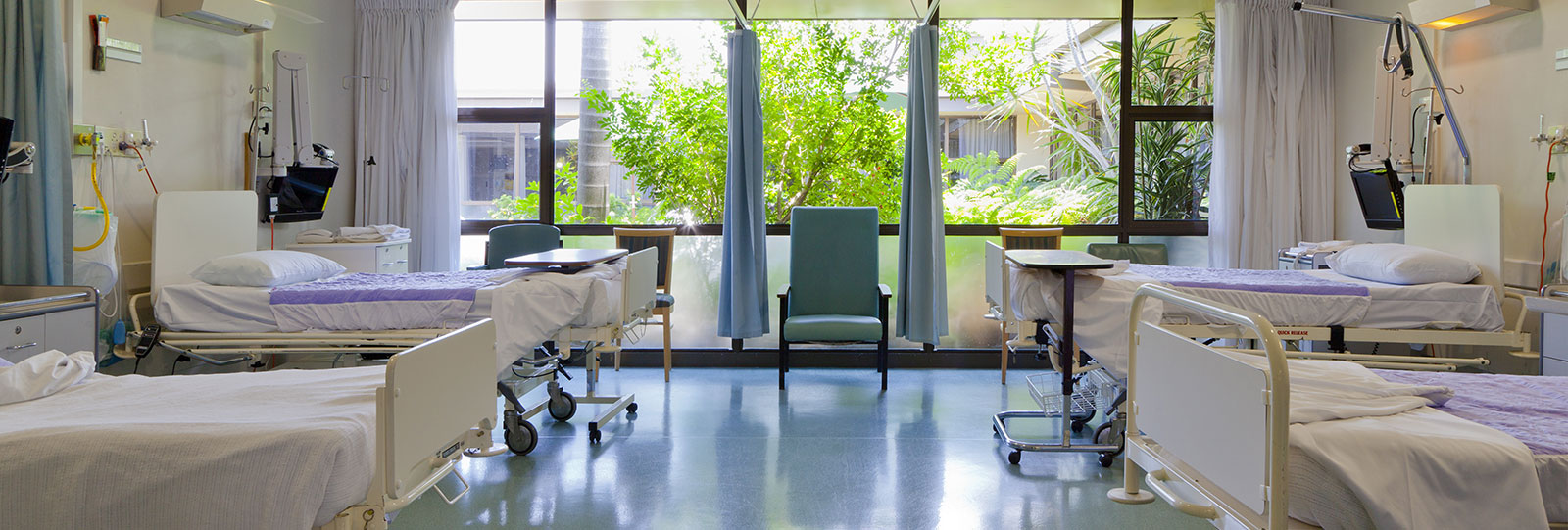
HPV decontamination systems are extremely effective at decontaminating enclosed and sealed areas as they destroy all pathogens, including vegetative bacteria, bacterial spores, fungi, fungal spores and viruses.
There are many different systems on the market, including ProXcide™, which uses a much lower concentration of HPV. This makes it particularly safe for use in the hospital environment.
Here, we outline the necessary preparations that must be carried out prior to starting the HPV decontamination process, in order to achieve maximum efficacy of decontamination and safety in operation.
1. Remove absorbent materials
To make sure the vaporised hydrogen peroxide reaches all areas, remove all absorbent materials from the room, including curtains and bed linen.
2. Clean the ward
Before beginning the decontamination process, it is essential that the room requiring treatment has been cleaned in line with your infection control procedure. Make sure that all surfaces are dried off following any manual cleaning. You may also need to arrange the room’s contents to expose as many surfaces as possible to the vapour.
3. Deactivate fire sensors and ventilation systems
Deactivate the fire sensors following the hospital’s procedures and isolate them using equipment such as CapKit. CapKit is a smoke detector restriction kit which can be used to cap fire detector heads and prevent false fire alarms caused by vapour activating fire detection systems. The kit can be used easily by one person from a safe height.
As the unit requires a contained air volume to operate, ventilation must also be switched off and ventilation points isolated to stop any vapour from leaving the room. VentKit is a simple device for sealing ventilation grilles that comes with a telescopic pole with anti-slip foot to ensure operator safety. The rigid plastic ventilation cover board attaches to the end of the pole and is extended to a flat fixed surface, providing support throughout the treatment process.
4. Set the temperature
The temperature of the room should be between 10 and 35 degrees for the process to complete successfully.
5. Close off any gaps
Close windows and seal any gaps in doors, walls and ceilings with blue DVI moisture impermeable tape. This prevents any vapour from getting out and ensures maximum efficiency.
6. Restrict access
Restrict access to the treatment area by positioning, ‘no entry’ signs on every access door. Inivos offer a range of simple and highly visible warning signs that can be used to inform personnel of the treatment process. Available in packs of fifty, the signs come with a ‘proof of process sign stub’ retained in the spine of the book where operators can record details of the time, date, location for future reference. There is also a handy pre-process checklist on the reverse.
A door bar can also be used to keep the door securely shut throughout the treatment. This is a particularly important safety consideration in the hospitality environment to ensure the room cannot be entered, especially in paediatric and mental health settings.
7. Inform ward staff
In addition to placing signs on the doors, make sure you inform ward staff that the process will be taking place, as well as how long it is likely to take. This will ensure minimum disruption to the hospital and patient care.
HPV decontamination systems, including ProXcide™, can be operated by any regular hospital cleaning staff. Most providers will offer in-depth training and certification to all hospital operators.
You can learn more about ProXcide™ here. If you require more information or want to talk to us about how we can support your hospital cleaning and decontamination processes, please get in touch.





